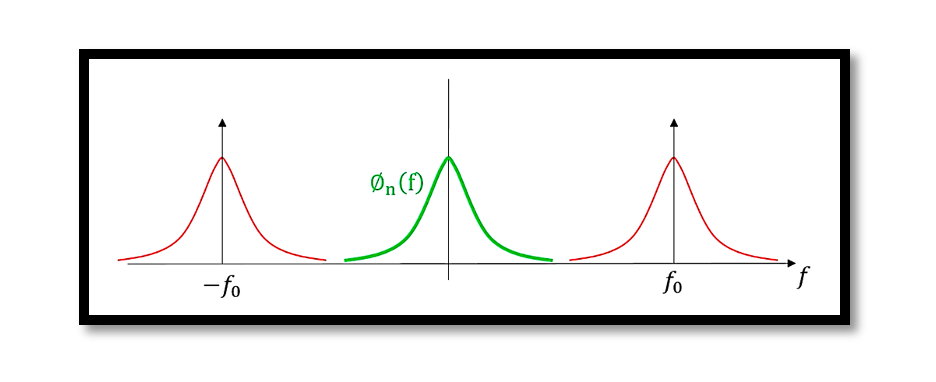
Understanding Phase Noise in Phase-Locked Loops (PLLs)
Phase noise is a critical parameter in the performance of oscillators, particularly in the context of Phase-Locked Loops (PLLs). It manifests as random fluctuations in the phase of a signal, which can degrade the performance of communication systems, signal processing, and other electronic applications. This blog post delves into the nature of phase noise, its impact in both time and frequency domains, and the underlying mathematical models.
Phase Noise in the Time Domain
Phase noise in the time domain can be understood through the disturbances it introduces in the oscillator’s phase. These disturbances cause several observable effects:
- Unequal Periods: The periods of the oscillations are not constant, leading to variations in the timing of signal cycles.
- Non-constant Instantaneous Frequency: The frequency of the oscillator varies randomly over time.
- Random Zero Crossings: The points at which the signal crosses zero voltage fluctuate unpredictably.
These effects are illustrated in the image, where noise sources in the oscillator disrupt the phase, causing irregularities in the signal’s zero crossings.

Mathematical Representation in Time Domain
The mathematical representation of phase noise in the time domain is given by the expression: Acos(ω0t+ϕn(t)) where:
- ω0t is the ideal phase without noise,
- ϕn(t) is the phase noise component.
The baseband signal ϕn and its frequency-domain representation ϕn(f) illustrate how the phase noise modulates the ideal carrier, resulting in a signal that deviates from its expected path. The phase noise component ϕn(f) introduces variations that cause the signal to deviate from the ideal phase trajectory ω0t.
Phase Noise in the Frequency Domain
In the frequency domain, phase noise appears as a spectral spreading around the carrier frequency f0. This spreading is characterized by a skirt around the carrier frequency. Various types of noise contribute to this spreading, including:
- Device Flicker Noise (1/ f3)
- Device Thermal Noise (1/ f2)
- Thermal Noise Floor due to parallel resistors
These noise sources create distinct regions around the carrier frequency where the phase noise dominates, resulting in a broader spectrum around the central frequency f0.

Ideal vs. Real Oscillator in Frequency Domain
An ideal oscillator would have a sharp spectral peak at f0, representing a single frequency with no noise. However, a real oscillator affected by phase noise will exhibit a skirt around the carrier in its spectrum. This skirt represents the phase noise, which spreads the signal’s energy over a range of frequencies around the carrier.
Take our entry level course (Below) for free using coupon code RAHRF101BLOG
RF Fundamentals, Basic Concepts and Components – RAHRF101
For limited time take an additional 10% off of all our courses using coupon code RFCERT10
Rahsoft RF Certificate and courses
Practical Implications and Mitigation
Understanding and mitigating phase noise is crucial for designing high-performance PLLs. Some strategies include:
- Improving Oscillator Design: Using low-noise components and designs that minimize thermal and flicker noise.
- Filtering: Implementing filters that can reduce the impact of noise at certain frequencies.
- Control Systems: Employing advanced control algorithms in PLLs to correct for phase errors dynamically.
Summary
Phase noise is a fundamental challenge in the design and operation of oscillators within PLLs. By understanding its behavior in both time and frequency domains and employing effective mitigation strategies, engineers can enhance the performance and reliability of electronic systems. The interplay between the phase noise and the carrier signal is complex, but with careful design and analysis, the detrimental effects of phase noise can be minimized, ensuring optimal performance of PLLs and the systems that rely on them.

Learn more about this topic by taking the complete course ‘Phase Lock Loop System Design Theory and Principles RAHRF469’. Watch the course videos for more detailed understanding. Also checkout other courses on RF system and IC design on https://rahsoft.com/courses/. Rahsoft also provides a certificate on Radio Frequency. All the courses offer step by step approach.
Tag:Phase Noise, PLL



